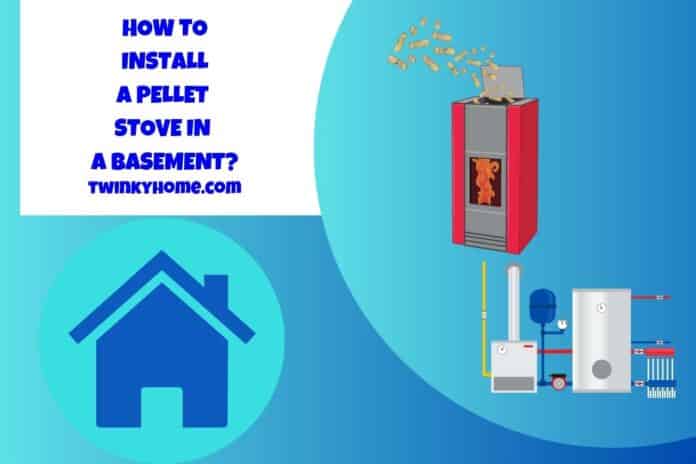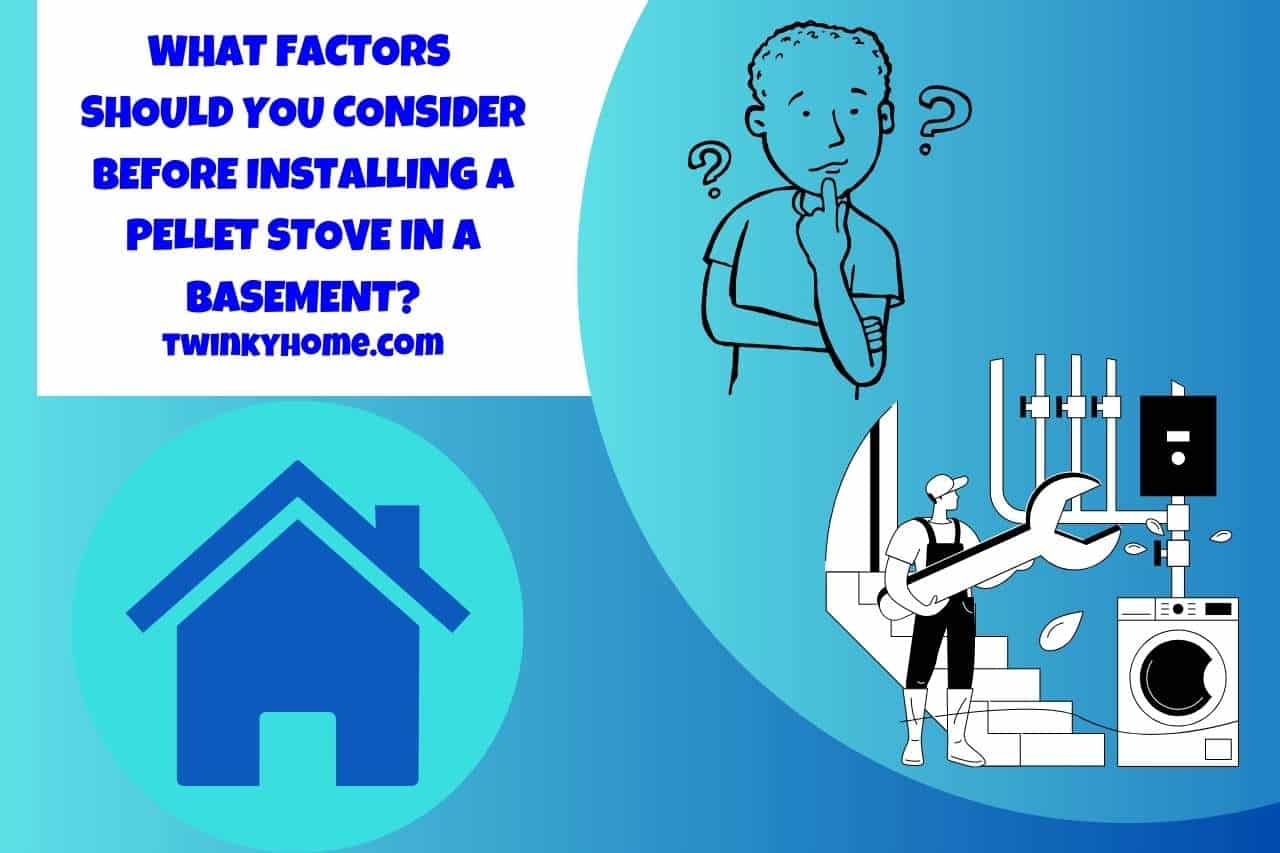Are you thinking of putting a pellet stove in your basement so it can heat up effectively? To ensure air quality and safety, proper ventilation is a key part of the installation process. Important to consider the particular needs and potential restrictions of your basement space. Knowing your options and taking the required precautions will help you build the ventilation system for your basement pellet stove.. It will ensure effective heating while maintaining a comfortable and safe environment. This article will explore various methods of installing basement pellet stove ventilation.
Will a Pellet Stove in the Basement Heat the Whole House?
A pellet stove in the basement is typically designed to heat the area in which it is installed, like a single room or a specific zone.
Freestanding pellet stoves are commonly used as space heaters, using a distribution blower to circulate the heat within the room.
There are additional types of pellet stoves that can use to heat larger areas or even a whole house, like hydro pellet stoves, ducted pellet stoves, and pellet boilers.
These alternative forms can be connected to the central heating system or use a network of ducts to distribute the hot air throughout the house.
A strong air-heating pellet heater placed in the center of a large, open-concept home may heat a sizable section of it.
The specific type and capacity of the pellet stove when determining its heating capabilities is important.
Good to contact a professional if you plan to use a pellet stove to heat your entire home to guarantee you select the appropriate type and size of the stove. Your home layout and heating requirements are compatible with this heating method.
What Factors Should You Consider Before Installing a Pellet Stove in a Basement?
A number of considerations should be considered prior to putting in a basement pellet stove.
- Enough Space – At least four-square feet should be available in the area where the pellet stove will be installed. It enables safe operation and aids in preventing the stove from being too close to combustible things.
- Obstructions – Check for potential obstructions like fuel lines, electrical wiring, and ductwork in the chosen location. Clear any obstructions or make necessary modifications before proceeding with the installation.
- Permits – Depending on local rules and regulations, you might need to get a permit, especially if the stove will be vented through an outside wall. If you are unsure whether a permit is necessary, contact your local building department.
- Gas Line Safety – If a gas line passes through your basement, be sure to keep it safe. It needs to be carefully sealed off to prevent any risks. Remove anything flammable from nearby of the stove.
- Adequate Ventilation – Basements can be damp and musty due to poor ventilation. Ensure that there is enough ventilation in the basement to support the pellet stove operation effectively and safely. Make sure there is a clear path to an outdoor vent system and remove any clutter from the area around the stove.
- Professional Opinion – If you are unsure about the suitability of your basement for a pellet stove, best to contact a professional. A qualified installer can evaluate your area, make sure it complies with the regulations, choose the ideal spot for the stove, and guarantee ideal installation.
You can make an informed choice and guarantee a secure and effective pellet stove installation in your basement by into consideration.
How Do You Choose the Right Location for Installing a Pellet Stove in a Basement?
Follow these steps to choose the location for installing a pellet stove in a basement.
- Choose an area that complies with local building requirements and offers sufficient clearance around the stove.
- Make sure the floor is level and remove any flammable materials from the area.
- Install a carbon monoxide detector and a fresh air inlet to ensure proper ventilation.
- Drill holes in the wall or ceiling in accordance with the manufacturer’s instructions to exhaust waste air.
- Install a floor protector to protect your floor from heat damage.
- Install the pellet stove and connect it to the ventilation system to complete the process.
How to Install a Pellet Stove in a Basement?
There are numerous precautions to take when installing a pellet stove in a basement to ensure a secure and reliable installation.
- Choose the Location for your Stove – Select a suitable spot in the basement, considering clearance requirements and proximity to a venting system.
- Prepare the Location – Make sure the stove will be installed on a flat surface and remove any combustible materials from the installation area.
- Ensure Adequate Ventilation – Safe functioning depends on adequate ventilation. Install a venting system, including an exhaust pipe for waste air and a fresh air intake for combustion air.
- Cut Holes to Exhaust Waste Air – Follow the manufacturer’s instructions to cut and properly position holes in the wall or ceiling for the exhaust pipe.
- Install the Floor Protector – Place a noncombustible floor protector under the pellet stove to protect the floor from heat and potential damage.
- Install the Stove – Make sure it is stable and level position the pellet stove with care on the prepared surface.
- Connect the Stove to the Ventilation System – Attach the exhaust pipe to the stove and connect it to the venting system, ensuring a secure and airtight connection.
What Are the Venting Requirements for a Pellet Stove in a Basement?
Important to follow the following venting requirements to vent a pellet stove in a basement properly.
- Fresh-air Intake and Exhaust – Ensure good ventilation in the basement by having a fresh-air intake to bring in combustion air and an exhaust flue to remove the waste air.
- Horizontal Venting – The vent pipe should be designed as an ‘L’ to direct the wind upward while venting air horizontally. A vent cap should also be installed on top for proper air circulation.
- Using an Existing Chimney – If using an existing chimney for venting, a stainless-steel flue liner with a diameter of 150mm should be installed throughout the entire chimney length. A suitable chimney cowl is needed to prevent wind entry, and a register plate is required at the base of the chimney.
- Placement of Horizontal Vent Pipes – Horizontal vent pipes should end at least 6 inches away from the exterior wall and be positioned high enough to prevent blockage from snowfall.
- Type of Vent Pipe – Most pellet stoves require type ‘L’ vent pipe. Ensure all joints between pipe components are properly silicone or have tightly sealed connections to prevent leaks.
Watch this video,
Video Credits – This Old House YouTube Channel
Discover More: Related Articles You Can’t Miss








![OGX Biotin And Collagen Shampoo Review [Updated One] Ogx Biotin And Collagen Shampoo Review](https://twinkyhome.com/wp-content/uploads/2022/03/Are-chicken-Super-Noodles-vegetarian-1-100x70.jpg)